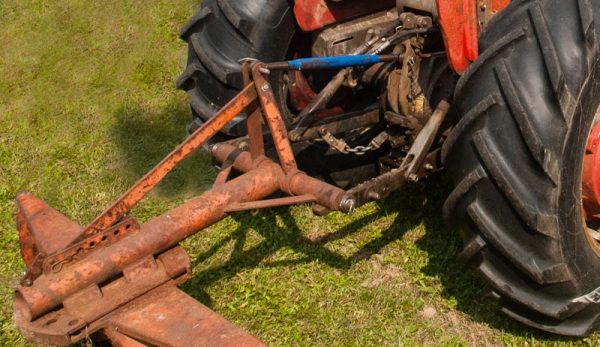
Tractor safety has come a long way through the years. Early adopters of horsepower over literal horse power were not infrequently endangered by their own machines.
Three-wheeled tractors negotiating slopes, plows being pulled by drawbars instead of three-point hitches … back in the day, there was always a risk of tractors flipping or tipping under challenging circumstances.
Today’s tractors are mechanical marvels with a strong emphasis on safety. In the increasingly unlikely event of tractor tipover, seatbelts and rollover protection structures (ROPS) are there to protect drivers from injury.
Check out these 13 tractor terms every hobby farmer needs to know.
Mind the Physics
Modern tractors have come so far. Today’s machines are so versatile it’s easy to believe they’re capable of handling anything we throw at them. But as with any machine, proper caution should be taken when operating to ensure the machines aren’t pushed beyond their limits.
Pay special attention when attempting to lift heavy or potentially unmovable items with a front-end loader or three-point hitch. Doing so runs the risk of raising the opposite end of the tractor off the ground.
The physics are straightforward when you think about them. Imagine you have forklifts installed on the front of your tractor, and you’re about to lift a massive log beyond the scope of what your machine can handle.
No matter how strong your tractor is, the physics don’t add up if the load you’re trying to lift is heavier than the tractor. Something has to give. If the forklifts can’t be raised, the body of the tractor may pivot instead.
Control the Pivot
A similar scenario can occur when using the three-point hitch.
Maybe you’re trying to install a large attachment on a lightweight tractor. Or maybe you’re using the three-point hitch to try and pull a fencepost out of the ground.
If the weight of the task is more than your tractor can handle, attempting to raise the hydraulic arms may prompt the front end of the tractor to rise instead.
These are extreme examples. But any time the load you’re lifting is similar in weight to the body of your tractor, there’s a chance your front or rear wheels will become the pivot point of an uncomfortable balancing act.
A heavy attachment installed on the three-point hitch of a lightweight tractor can take weight off the front wheels. It also makes it difficult to gain traction for steering.
A heavy load on the front end can place extra strain on the front axle while reducing weight on the rear wheels. This makes it harder to gain proper traction for driving.
Counterweights are often a suitable solution. Designs vary widely, but as an example a steel box can be attached to the three-point hitch and filled with a heavy material such as concrete, sand, or gravel to place weight behind the rear wheels and counterbalance heavy front-end loads.
Wheel weights and/or liquid tire ballast can serve a similar purpose. In a pinch, it’s not uncommon for farmers to attach a rear implement to add weight behind the tractor. This naturally makes the tractor less maneuverable, however.
Need to remove stubborn fenceposts? Let you tractor do the heavy lifting.
Read Up
Perhaps the surest way to stay safe is to read the documentation for your equipment and determine what your tractor hydraulics are rated to lift. Understand that such figures are based on best-case scenarios and might not be reachable in every real-world situation, though.
Remember, there’s really no need to push your tractor to the limit if you don’t have to. Moving smaller, lighter loads (and using implements properly sized for your tractor) might require more time and effort, but operating your tractor safely and securely should always be your foremost goal.




